The Type 23 programme originally arose in the late 1970’s, at the height of the Cold War.
At the time Britain was locked in a pre-apocalyptic arms race with the Soviet Union, and thus all developments across the three services were geared to one thing: World War III.
In few places was this more keenly felt than the navy, for whom this mean open-ocean symmetrical warfare against the Communist forces. To be precise, Anti-Submarine Warfare.
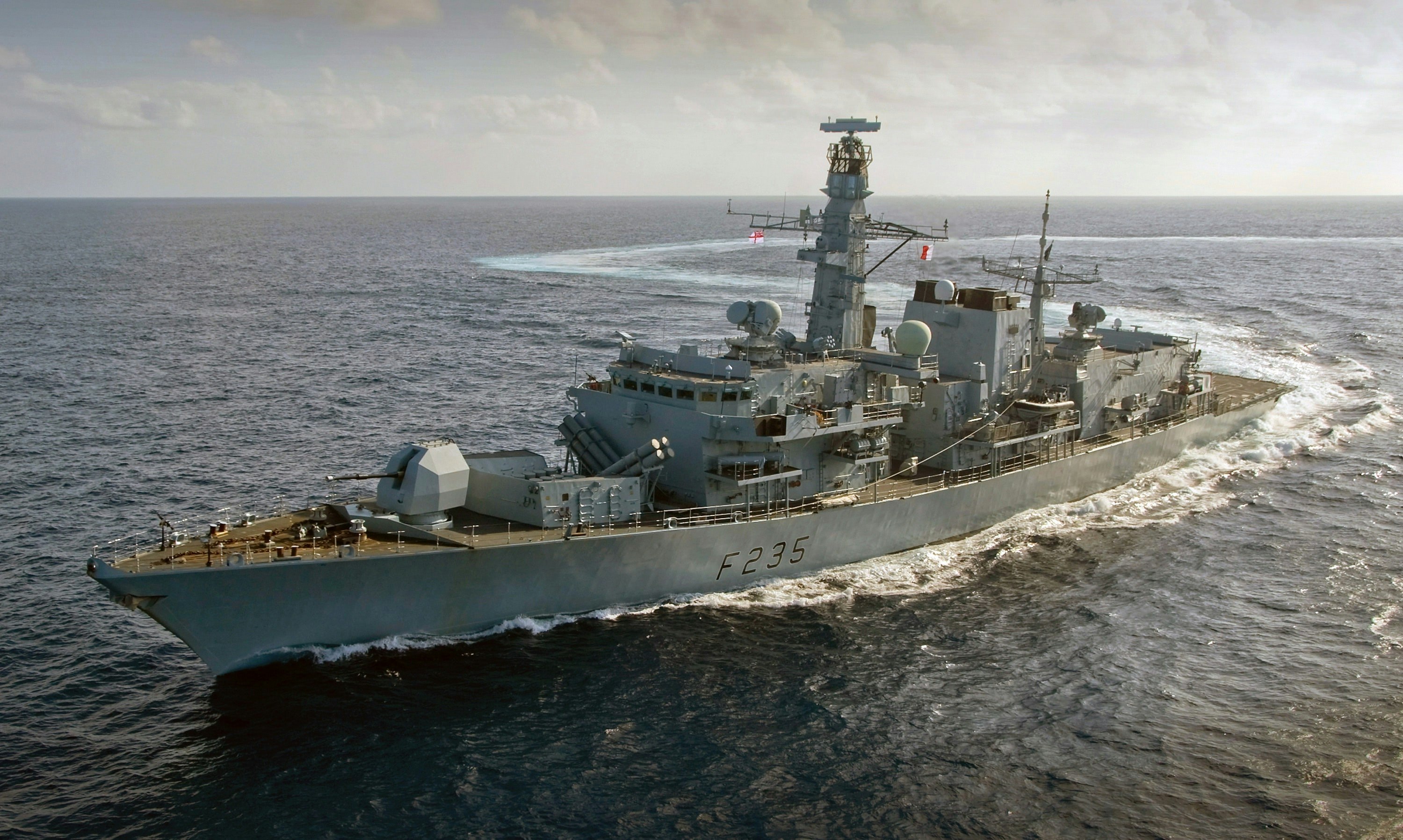
This was due to the fact that Western war plans were centred on the concept of a submarine rush through the GIUK (Greenland-Iceland-United Kingdom) Gap.
The Soviet navy was very much based around deepwater submarine operations, and was building up a formidable fleet of SSNs- Nuclear-powered attack submarines. Their naval tactics were centred around flooding the Atlantic with these hunter-killer boats, sinking Military and Merchant ships alike. While surface ships did of course feature, they existed to follow the submarine squadrons in, supporting them and mopping up with anti-ship missiles and light air cover (the Kiev class is an excellent example of this, a jack-of-all-trades pocket carrier/guided missile platform intended to support SSN operations).
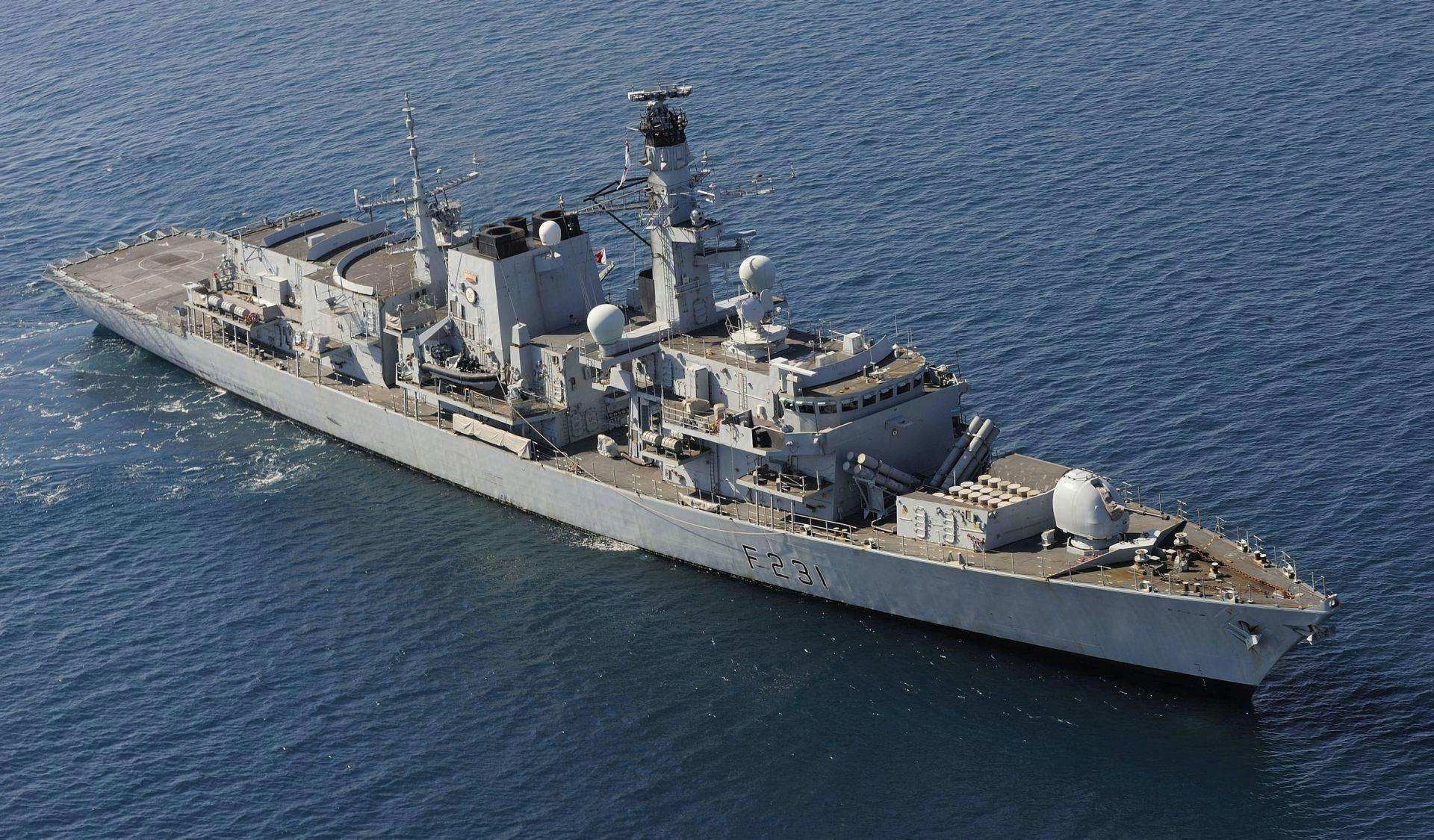
This was in sharp contrast to the US Navy, which at the time was building a more balance force centred around Carrier Battle Groups. As the first in the firing line, Britain would have to change- and so in the 70’s, we did.
Having already lost our battleship in 1960, we now focussed on cutting the large, catapult-equipped carriers and instead moved towards dedicated anti-submarine operations. This we did, instead designing a three-ship class of light ASW carriers, the legendary Invincible Class, which initially were envisaged to be primarily helicopter equipped, flying the equally legendary Sea Harrier for the purposes of air cover, primarily not against Soviet naval aviation but long-range Maritime Bombers. So, this is how things stood in the late 1970’s: ASW operations, ASW operations and ASW operations.
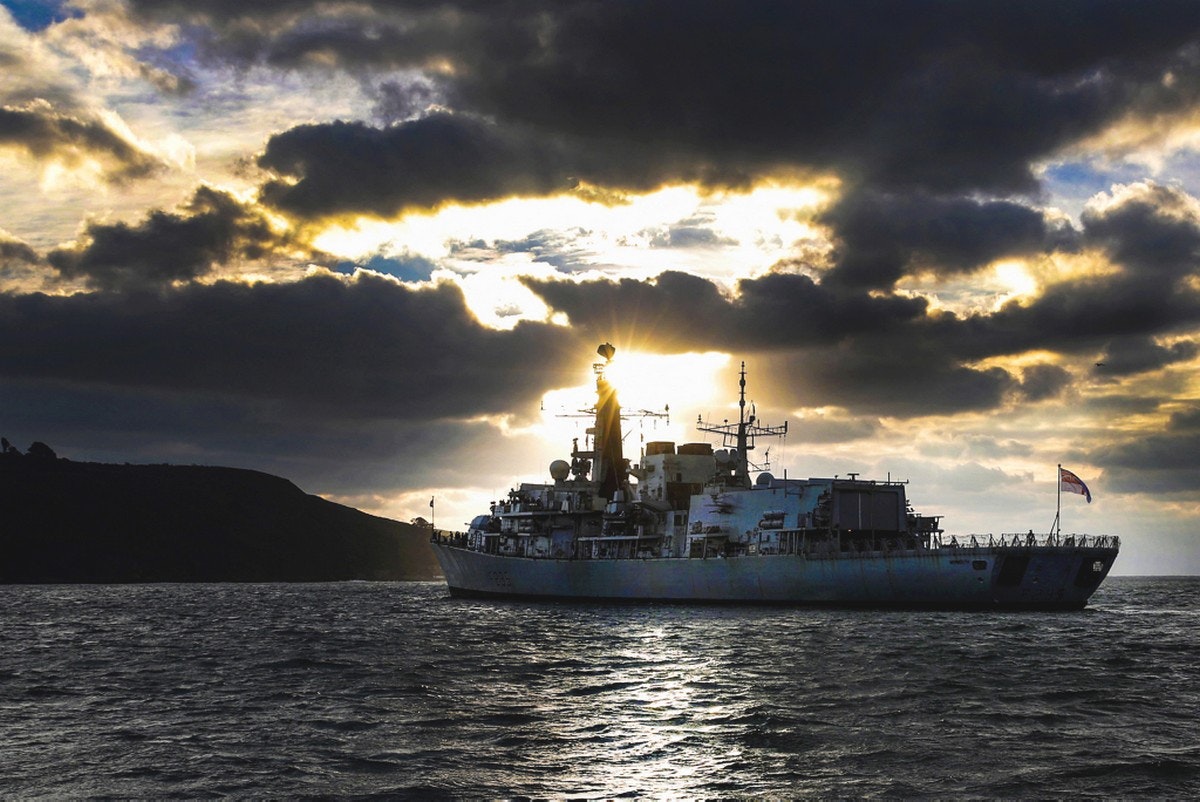
Naturally, the centre of these plans would be the Frigate. Whereas our destroyers (at the time, the Type 42 Sheffield class) were designed for anti-air warfare, playing escort to the carriers, frigates would be the hunters of the force, ranging far and wide to track and kill the ‘reds’. At the time, we operated three classes of frigate: the venerable Leander Class, dating back to 1960, which had been the one-size-fits-all post-WWII frigate which was now specialising in the submarine work with a class of 26 vessels, the 1974 Type 21, a more general escort with a more modern design and a class of 8, and the upcoming Type 22, a fully specialised sub hunter that was under construction in the late 70’s with a class of 14.
The plan was design a light ASW frigate that would be able to act in support of the larger Type 22, providing the wide coverage that was all-important to ASW operations. The intention was for this to be a fully specialised ship, with a towed array- the latest must-have convenience for the modern sub hunter- and be able to carry a small helicopter to deal with them. It was to be given no defensive armament, a rather staggering prospect to today’s world of multiroling, and was envisaged to be fielded in squadrons of four.
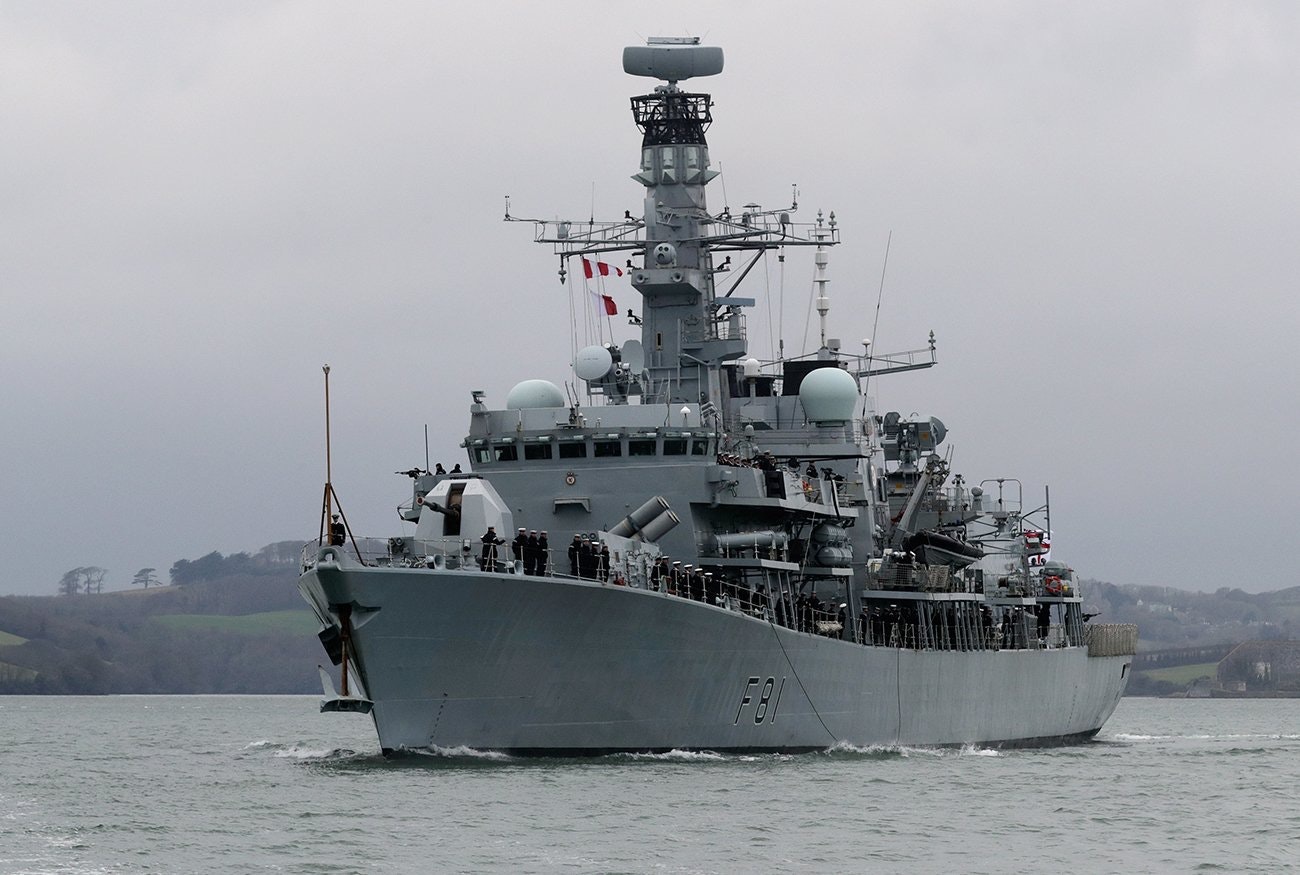
Each of these far-ranging units would be supported by a Fort Victoria class replenishment vessel, which would be operating as a sort of catch-all mothership, providing air cover with Sea Wolf AA missiles and with hangar facilities to service the helicopters of the frigates (something that the ships themselves would be lacking). But, perhaps fortunately, this never came to pass.
In 1982, the Argentine Junta invaded the Falklands Islands, a far-flung British colony in the South Atlantic. When the taskforce sailed, they rapidly found themselves under air attack, and the loss of several vessels and the damaging of several more rapidly made several things clear:
- Aircraft still indisputably posed a threat to ships.
- Centralised Air Defence may not be enough: ships would need the ability to defend themselves.
- The Argentine anti-shipping attacks had come in two forms: the Exocet, a terrifyingly effective and very modern sea-skimming missile that would require up-to-date tracking measures to detect and modern interception technology to take down, and older conventional bombing. While we were immensely fortunate in that very few 1000pd bombs dropped actually detonated (if the argentine air force had realised the fuse problem at the beginning of the war then subsequent events would have been very, very different) there was still a salient point there. What this proved was that air defence was simply crucial for vessels.

After the war, the Type 23 programme rapidly began to evolve. First to appear was the very significant decision to include a VLS (Vertical Launch System) equipped with Sea Wolf, which in turn meant a larger radar and tracking suite, which would be crucial for dealing with anti-ship missiles. With the ship growing to accommodate the VLS and the extra super structural equipment, the two main additions were placed in to make this once and for all a larger and more complex design: a multirole Naval Gun (something that had proved its worth for anti-shore work in the Falklands) and a hangar, which was a simple practicality now that the hull size had grown.

With a gun, hangar and VLS added, followed shortly by a Harpoon system, the Type 23 had become a large all-rounder that, while maintaining its ASW capability, had become a self-contained vessel in its own right- and the rest, as they say, is history. Surfing on the wave created by rapid rise of pro-Naval sentiment in parliament created by the Senior Service’s time in the limelight during the Falklands (including the tearing up of the 1981 review, but that’s a story for another day), the ship had become a colossally flexible vessel that now eclipsed the Type 22 itself- primarily because it had been amended post-Falklands, which meant that they could work with an essentially clean slate.
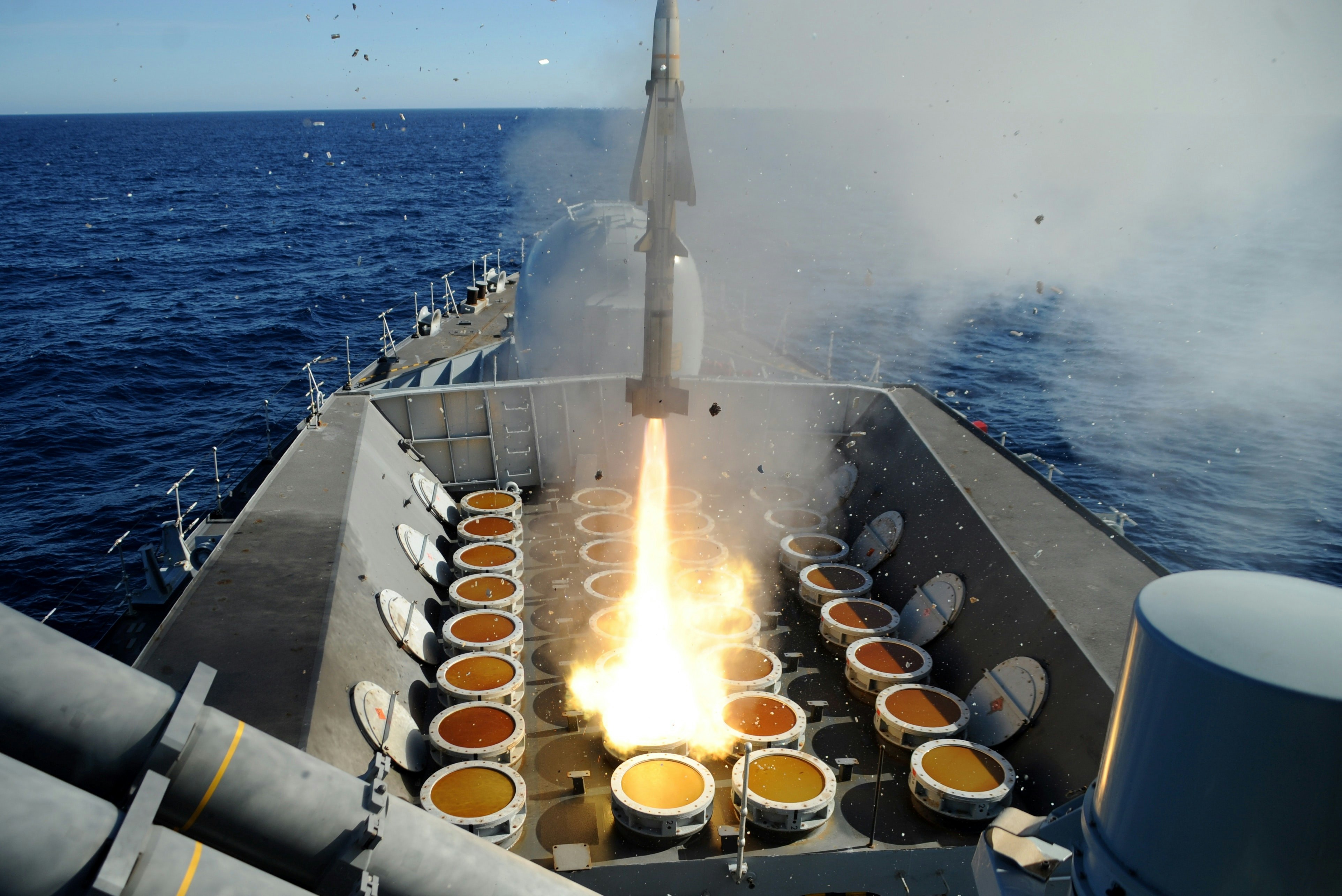
Overall 16 were built, with the class being named the Duke class after the common theme of the names being, you guessed it, Dukes. The first ship, Norfolk F230, was laid down in 1985 and finally launched in 1990, and the final ship, St. Albans F83, was launched in 2002.
By that point the Berlin Wall had fallen and the Cold War had ended, meaning that the focus would once more shift towards more general naval operations. It is this that makes the Type 23 so interesting as it was designed during the Cold War yet launched and operated entirely after it- and so these post-Falklands design changes, seen in the ASW navy as being somewhere between useful but not necessarily and overly complicated were now the reason that the class had been saved. By diversifying its capability, the Government had unwittingly secured its future.

Design
The Type 23 displaces a total of 4900 tons, with a length of 133m, a beam of 16.1m and a draught of 7.3 metres. This can be compared to the Type 22 Batch 3 (in many ways a similar vessel, though without a VLS), displacing 5300 tons and 148.1m long, the Type 21, 3360 tons and 117m long, and the Leander class, 2962 tons and 113.4m long. The Type 23 has a complement of 185, relatively low for the period, which was largely due to experiences in the Falklands.
Propulsion
The Type 23 is propelled by a CODLAG Diesel-electric/gas system including four diesel generators and two Rolls-Royce Spey turbines, as used in the Type 22, not to mention frigates and destroyer export orders worldwide. The given top speed is 28 knots, although Sutherland has achieved 34.4 knots under trials. The range of the vessel is 7500 nautical miles at 15 knots.
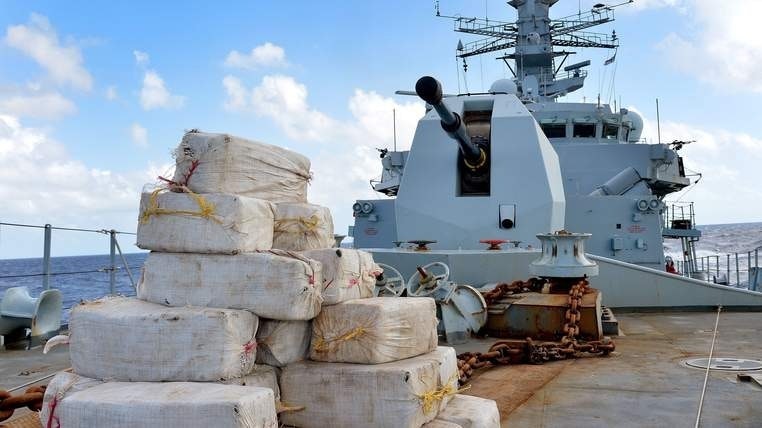
Armament
The most noticeable item that the ship is equipped with is the BAE Mark VIII 4.5” Naval Gun.
It is essentially identical to that operated by the Type 42 and 45 destroyers. Between 2005 and 2012, the 13 remaining ships all had their guns upgraded to the Mod 1 standard by Babcock Marine, noticeable for its stealthy design. The ships are also currently having their DS30B 30mm guns replaced by the newer DS30M, designed for close-in defence against fast moving attack craft.
The anti-air warfare is provided by a 32-cell VLS system designed for the Sea Wolf missile system. The original Sea Wolf (of Fort Victoria intention) was in a non-VLS launch design, which was problematic due to the issue of the hull of the ship getting in the way of the missile launch (another problem identified in the Falklands). With a VLS (a new innovation for the 80’s and famed for it’s key role in such famous designs as Arleigh Burke), the missiles could clear the hull of the ship before igniting, vastly improving the anti-capability over the originally planned conventionally launched missiles. Considering that the ship was intended to have no anti-air capability at all, that is rather impressive! Currently, the Sea Wolf missiles are being replaced by the newer Sea Ceptor CAMM design, notable for the fact that four missiles can fit into one Sea Wolf VLS tube. This gives Type 23 excellent self-defence AA coverage.
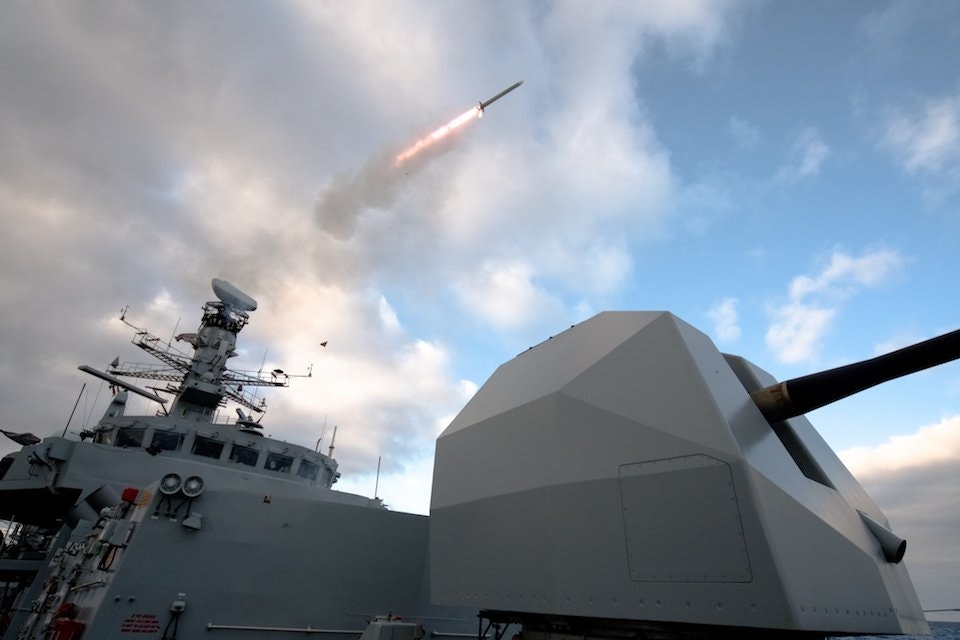
The anti-submarine capability is provided by Stingray anti-submarine torpedoes, fired from two tubes. In addition to that, the Type 23 can carry a single Merlin HC1, the airborne submarine hunter of the Royal Navy and sometimes quoted as the ‘flying frigate’ for obvious reasons. The Merlin is equipped with dipping sonar, sonobuoys and depth charges, ideal for ASW operations.
The anti-shipping capability is provided by the ubiquitous Harpoon missile, a US designed anti-ship missile was originally launched in 1977 and since then has provided both the US and Royal navies (not to mention many others) with excellent anti-surface capability- made all the better by the fact that the missiles are stored in simple bolt-on racks rather than a more complex deck-penetrating VLS system, which would potentially make reloading a more complicated affair. The Type 23 has two of these four-missile racks.
Sensors and electronics
Currently, the Type 23 is undergoing as a class the replacement of the older Type 996 radar with the newer and far more capable Type 997 Artisan 3D radar system.
This is reportedly 5 times more capable and was also fitted to the Queen Elizabeth and Albion classes. The ships are fitted with two Marconi Type 991 systems for fire control, linked up to the aforementioned Sea Wolf system.
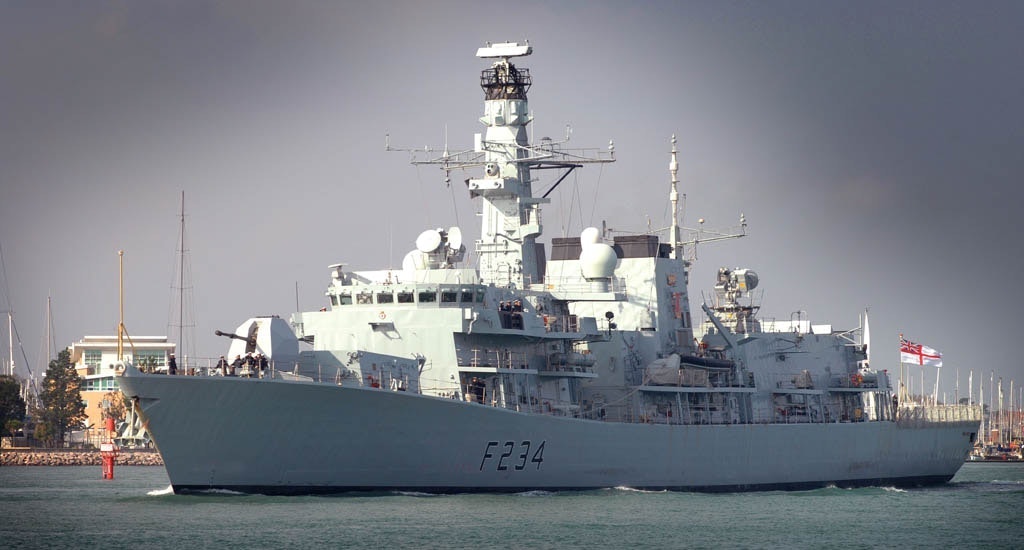
This provides vastly superior radar coverage to anything that we operated in the Falklands, and will be the key to identifying and downing any incoming offensive action in any future conflict. In the ASW department, the ships are also fitted with a Thales Type 2050 bow sonar array. In addition to this, five of the Type 23s are equipped with Type 2031Z towed sonar arrays, with the other eight bringing Type 2087 to the table.
Factor in the airborne ASW capability, and the end product is a vessel with simply superb anti-submarine capability that leaves us in absolutely no doubt as to what it was originally designed for! Kelvin Hughes Type 1007 and Racal Decca Type 1008 provide navigational coverage, with the Sea Archer 30 being in charge of fire-control. The CMS, or Combat Management System, is provided by BAE Systems with the Command System DNA.
Summary
Throughout its lifetime, the Type 23 frigate has been at the forefront of British overseas activity. They are regularly used in drug-interdiction raids in the Caribbean, with raids netting millions in cocaine or heroin.
They have been used in disaster relief operations in overseas territories and beyond, and even in the evacuation of British civilians from Libya in 2011 during Operation Ellamy. Over the last 20+ years, whenever a British carrier or assault ship has left port, there has always been a Type 23 to be seen nearby, prowling the surrounding waters.
They have been true messengers of British strategic intent, and will continue to do so until 2036, when the new Type 26 – Type 23 on steroids would be a pretty good way of describing it- will replace the last ‘Duke’ class.


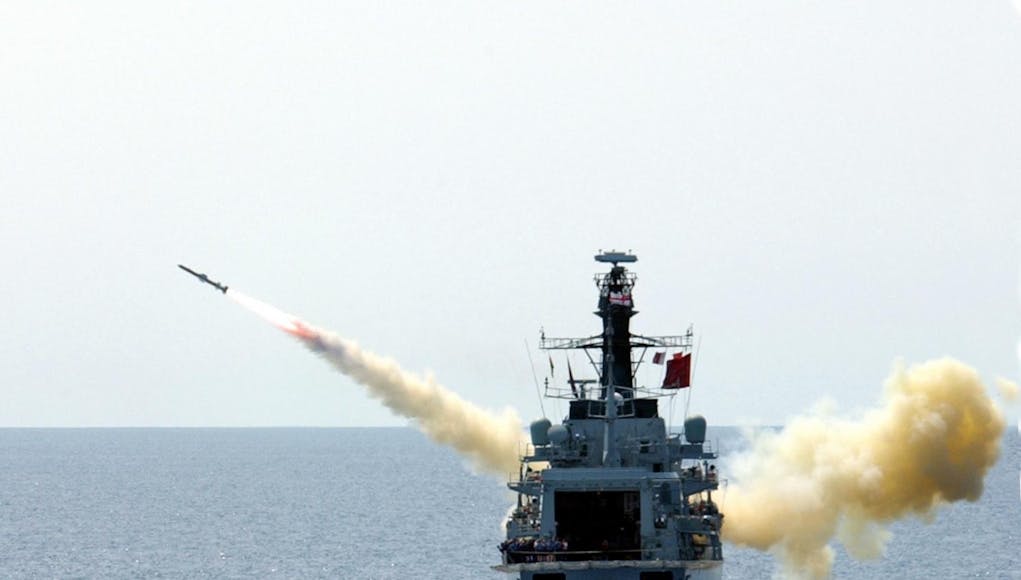
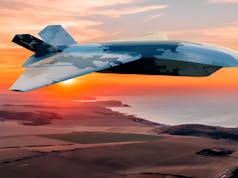

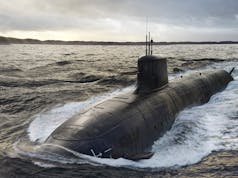
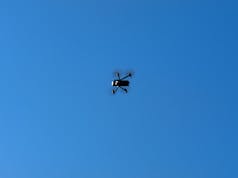



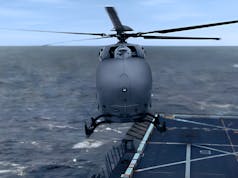
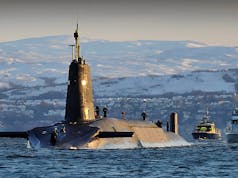

Thanks for the article. The bit that was news to me was the 5 GP variants having a towed array fitted. If true, the provision for this makes sense IMHO. T31 take note!
Agreed, that was news to me too.
The GP variant doesn’t have 2031, it was replaced by 2087 and only fitted to the TA tagged platforms. The Seawolf trackers (911) have now also been removed as Se Ceptor takes its TI data from 997
GP dont have towed array. They have a gym! I was in one not 3 weeks ago.
Well that explains why I have not heard of that before ?.
Only four of the 23’s had Towed array. I was on the Iron Duke which had towed array yet when I joined the Kent the space for towed array was a gym. Each ship was duty towed array for 3 months of the year. When ever the Russians set of ocean laid sonar boys off the duty ship went.
Proof the UK can build the best. In many ways, I’ll be sad to see the 23’s go, but I’m sure most will sail on under a different flag? Now we must look to the future and ensure we get the eight Type26’s and 31’s. However, the real task is to design an all-new naval that requires a third of the current manpower, as recruitment could become increasingly difficult in the coming decades? Of all three services, the RN requires the largest manning per fighting unit, than the other two. I can’t see QE Class running with less manpower nor the Bulwark Class, or similarly sized vessels. So, with limited personnel, the smaller vessels are going to either have to reduce weaponry and onboard support, or be berthed for 70% of the year. The UK is not alone the same delmar faces many navies, and some could say if that is the case, then the status quo is unaffected?
I am not so sure they will continue on under different flags, maybe a few of them, but the ones currently in service are getting close to worse than worn out, even though some have undergone lifex refit, by the time they come up for replacement they will be utterly spent, they were never supposed to serve as long as they have done and will do by the time they get retired
Longevity is the key for future ships and that means more and more composite materials.
When the Chilean Navy upgrades their 3 T23’s it would be interesting to compare them to the RN ones,id have thought there will be some major differences.
All our frigates are going through lifex refit. And we are no doubt stripping parts from our type 23s for our type 31s, we can’t be putting ex type 23 parts on our billion pound type 26 frigates! Or if we are it’s a dam joke and most nations can build 3 great frigates for 1 billion….
Its time we started installing these onboard our Type 23’s and 45’s.
Norwegian Naval Strike Missile.
https://www.youtube.com/watch?v=jhGJ53oS1Bo
If I understand the article correctly the Sea Ceptor missile can be quad packed into the Sea Wolf launcher, that would give the possibility of 128 Sea Ceptor missiles on a T23 hull. If that is the case then that is one hell of a punch in the Anti Air capability.
Why don’t we just copy the hull, electronic and weapons fit of the latest upgraded T23 and upgrade the power-plant and CIC with a stealth superstructure with some extra space for a CIWS.
Much of the equipment could be stripped out of the T23 to achieve this, it would give a good general purpose escort frigate.
The article needs correcting. I believe you can quad pack Sea Cepter into a Mk41 cell, but the Sea Wolf launcher is a 1 for 1 replacement.
“Sea Ceptor missile can be quad packed into the Sea Wolf launcher, that would give the possibility of 128 Sea Ceptor missiles on a T23 hull. If that is the case then that is one hell of a punch in the Anti Air capability.”
Until the new Type 26/31 enters service, up arming our ships is the best solution.
Having our frigates with more than double anti air missiles than our dedicated anti air destroyers would be very embarrassing… But the 45s were fitted for mk41 VLS silos or was it 16? Anyway if 14 we could quad pack sea ceptor so that’s another 56 anti air missiles extra and just like a destroyer should have…. I would put 6 tomahawks minimum to give our destroyers another capability and the rest of the mk41 quad pack sea ceptor
Or possibly get rid of aster 15 and fill the current VLS with 36 aster 30 and 48 camm (or 32 aster 30 and 64 camm, pick and mix to your hearts content)
It would be a possible improvement over the current system.
I was a bit shocked while watching the type 45 documentary a while back when it was being buzzed by Russian planes in the Black Sea. One of the officers commentated that there were only 19 Russian planes and the t45 had 48 missiles so they would be fine.
To be honest, I think it would be sensible to both ditch Aster 15 in favour of CAMM(M) (possibly in the Italian ER variant) and add the Mk 41 VLS in which they can be quad-packed.
To arm a Type 45 destroyer with Aster 30 Block 1(NT) and Aster 30 Block 2 BMD, will require to install Sylver A70 VLS cells, these will also allow the T45 PAAM’s VLS also to launch Tomahawk, and SCALP(sea launched Storm Shadow). Presently the T45’s PAAM’s vls is 48 Sylver A50 cells, that only allow Aster 15 and Aster 30 Block 0 to be launched, or quad packed CAMM can be launched.
I think there is spare space to install up to 16 A70 cells on a T45.
Also is there any need for such a need of a large main gun on a T45?
Why go through the expense of fitting a different VLS system on a Type 45, for just 16 cells?
Whereas the RN could use the spare space for VLS cells, by fitting Sylver A70 cells, which can be used to launch Tomahawk.
See my post below!
I think should have been it’s quad packed into a Mk41 VLS not Sea Wolf launcher. No UK ship has, as yet, a Mk41.
Nope another incorrect fact. You cannot put four SC in a SWVL silo The SW silo is not big enough. Add to that the extra explosive content onboard would need a new fire main, the extra weight Fwd would drag the bow down
That’s my understanding too. I think the article writer has misunderstood Wikipedia, which says: “Like Sea Wolf, CAMM(M) will be VLS launched; however due to its design, CAMM(M) can be packed much more tightly into the VLS, with up to four CAMM(M) fitting into the space occupied by one Sea Wolf missile.” That, of course, is the case if Sea Ceptor is being quad-packed into a Sylver or Mk 41 VLS, but it’s being fitted in the T23 in its own launch canisters, on a one-for-one replacement with the Sea Wolf VLS cells (i.e., 32 Sea Ceptor only).
Something that always baffled me was, despite the obvious need for a CIWS after the Falklands, and the fact that the RN then went bolting Phalanxes to existing vessels and redesigning new ships to include Goalkeeper, the Dukes never received any. Obviously they had a lot of faith in the Sea Wolf VLS, but it still seems like a design oversight.
Also, not to nit pick but we operated more than 3 frigate classes in the 70s. There were the Whitbys and Rothesays, as well as the remaining Type 15s, Tribals, Blackwoods (albeit these were being phased out at the time).
Seeing as the Type 23 design was expanded post Falklands maybe they simply ran out of room/space/weight to be able to put a CIWS on.
That’s possible, but doesn’t seem right. The pre Falklands design was a small ASW only platform; post war, they expanded the design massively to include a MCG, VLS, enhanced radar and FCS, and hangar. None of that suggests they were constrained by the original small size of the design, so the idea that they ran out of margin to add a Phalanx seems implausible.
For a single Mount on a Frigate sized ship placement on top of the Hangar seems to be the obvious solution (RCN Halifax class),perhaps there is a reason why this was not done.A pair Amidships (T45) would also be a possibility provided there is the space to put them,they might have required a dedicated platform to be built which might have given topweight issues.Another reason might just be the cost ,seeing as they are equipped with a pair of DS30M anyway.
The hangar definitely would’ve been the most appropriate location for it, as it provides the greatest coverage and eliminates the need for two systems. It’s probable that the mount would’ve obscured the Sea Wolf director though.
The DS30s are only for use against small surface targets (“junk busting” is the term, I believe), they serve a completely different purpose to a CIWS
The hangar roof is probably the least ideal place to put a CIWS. When it fires across a flight deck the sabot and pusher disks cover the flight deck area. Trials with Goalkeeper firing across a flight deck ended up with the sabot and pusher discs punching holes in representative crew dummies and ally plates put there to represent an aircraft.
Seawolf was good enough to not need a CIWS.
Goalkeeper was placed on T22 Batch 3s because of an agreement between the Dutch and UK Govts. The UK would buy Goalkeeper and the Dutch would buy UK Spey GT’s. They had to go somewhere so on T22 B3 they went!
So CIWS were all for nothing. That’s an awful lot of engineers and respected articles out there that have given completely the wrong impression.
An accurate view of the military is beginning to seem like an impossibility. There are too many ways to be proven wrong and humiliated.
Cheers Gunbuster – bearing that in mind are you surprised at how many Warships do place CIWS on top of the Hangar ?.
If you dont have SW or SC you are left with a CIWS and if there is no space to put it anywhere else then the hangar it is.
CIWS are OK P&S on DD/FF (T45) or 3 mounts on a QE but they need to be part of a system of systems not a be all and end all.
They tried fitting the 23s with Goalkeeper when I was in service on the Iron Duke. The only place for it was on the hangar roof yet the current superstructure couldn’t take the added weight. We had engineers on board for days to create a solution and it simply never happened.
We should build a modern type 23 frigate for our GP frigates, and a modernised version and build 8 minimum. We need 16 frigates minimum. We lost half our destroyers and frigates not long ago! We really need 12 destroyers or 10 minimum and 20 frigates but 16 minimum! We can afford them but the political will isn’t there unfortunately!! Our navy doesn’t make us much money!
@Cam I think we lost more than half! It is a disgrace. Not to forget what has been done to the sub-surface fleet.
As to retirement, give them with T2087 to the Latvian, Lithuanian and Estonian navies, would beef up both AAW and ASW and release UK efforts. The Baltic is low saline and more moderate.
The fact is we can’t afford them. The deficit may have been eliminated but the Institute For Economic Affairs estimate UK national debt to be close to £5 trillion once state and public pensions are factored in. The post war US truism that the UK was more interested in paying for false teeth and glasses for it’s citizens than ships and sailors for it’s navy has become so unaffordable that any future expansion will need a drastic redution of spending elsewhere and/or significant economic growth.
utter rubbish
The Type 23 has 4 torpedo tubes
If they announce an increase in war heads as part of this review it will be a bit of an own goal as it will take all the headlines and be quoted as the reason we can’t give nurses a payrise.
While I support the nuclear deterant it’s cost its mind boggling. We seems to have been stick with a single solution that could name whatever price it wanted.